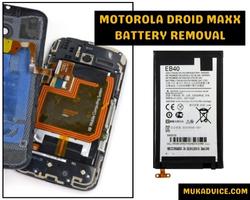If you’re a coffee enthusiast, your Keurig is probably one of your most cherished kitchen appliances. But like any machine, it can encounter problems over time—whether it’s a stubborn clog, a broken part, or simply the need for a good cleaning.
Instead of rushing to replace your Keurig, why not take matters into your own hands? Taking apart your Keurig can be a rewarding and cost-effective way to troubleshoot issues, perform deep cleaning, and even replace faulty components.
In this guide, we’ll walk you through the process of disassembling your Keurig coffee maker, step by step. Whether you’re trying to fix a brewing issue, unclog a needle, or just perform regular maintenance, taking apart your machine will give you the chance to fully inspect and clean the key parts.
Not only can this extend the lifespan of your coffee maker, but it can also ensure that you’re getting the best cup of coffee every time you brew.
This isn’t a task you need to be afraid of! With the right tools, a little patience, and some helpful guidance, you’ll be able to take apart your Keurig with ease.
How to take apart a keurig
Let’s dive into the world of DIY Keurig maintenance, and get your machine running like new again!
Why You Might Want to Take Apart Your Keurig
Before diving into the details of disassembly, let’s take a quick look at why you might want to take your Keurig apart in the first place:
- Clogs and Blockages: Coffee grounds, mineral buildup, and old water can clog the needles and tubing, causing your Keurig to malfunction.
- Cleaning: Regular cleaning is essential to maintaining the performance of your Keurig, and disassembling parts allows you to get to the nooks and crannies that aren’t always reachable.
- Repairs: If a part of your Keurig is broken—whether it’s the water reservoir, pump, or the K-cup holder—you might need to take the machine apart to access the faulty component.
- General Maintenance: Taking apart your Keurig can help you spot wear and tear before it becomes a bigger issue.
What You’ll Need
Before you start, gather the following tools and supplies to ensure the process goes smoothly:
- A screwdriver (usually a Phillips head)
- A soft cloth or sponge
- Mild dish soap
- Water and a vinegar solution (for cleaning)
- A plastic bag or container (for screws and small parts)
- A soft brush (optional)
- Replacement parts (if needed)
Step 1: Unplug and Prepare Your Keurig
The first and most important step before disassembling your Keurig is to unplug the machine. Safety should always come first, so make sure the coffee maker is not connected to a power source.
Once unplugged, remove any K-cups and take out the water reservoir. You can set the reservoir aside, as you won’t need to disassemble it for now.
Step 2: Remove the Water Reservoir and Drip Tray
With the machine unplugged, begin by removing the water reservoir. This is usually a simple task—just lift the reservoir off the back of the machine.
Next, remove the drip tray from the bottom of the Keurig. If your model has a drip tray insert, you’ll want to remove that as well. Both of these parts can be cleaned separately.
Step 3: Unscrew the Keurig Body
Now it’s time to start disassembling the actual body of the Keurig. Use your screwdriver to carefully unscrew the screws that hold the outer casing in place. These screws are typically located at the back or sides of the machine. Depending on the model, there may be screws hidden under the water reservoir or drip tray, so make sure to check there.
Place the screws in a small container or bag to keep them safe and organized.
Step 4: Detach the Brewing Assembly
With the outer casing removed, you should now be able to see the brewing components of your Keurig. This includes the needle assembly, the water pump, and the internal wiring.
- Needles: Most Keurig machines have two needles—one that punctures the K-cup top and one at the bottom. Carefully detach these needles. If you notice any blockages (such as coffee grounds), use a brush or toothpick to gently clean them. Be cautious not to bend or damage the needles.
- Brewing Chamber: If your machine has a removable brewing chamber, you can detach it now for cleaning. This is where the K-cup sits, and it can often get clogged with coffee grounds, which can affect performance.
Step 5: Clean and Inspect the Internal Components
Once the key components are exposed, take the opportunity to clean and inspect them for any damage or buildup. Use a damp cloth to wipe down the inside of the machine, paying special attention to areas where water flows. A build-up of mineral deposits from hard water can block the pipes and affect the brewing process, so cleaning them with a vinegar solution can help clear things up.
Step 6: Check the Water Pump
The water pump is a critical part of your Keurig. If your machine is not brewing or not brewing properly, it could be due to a malfunctioning pump. Inspect the pump and the hoses that connect to it. If there’s any visible damage, wear, or buildup, the pump may need to be replaced.
Step 7: Reassemble the Keurig
Once everything is cleaned and inspected, it’s time to put your Keurig back together. Start by carefully placing the brewing components back into their original positions. Reattach the needles, making sure they’re securely in place.
After reattaching the internal parts, begin reassembling the outer casing by securing the screws. Make sure all the screws are tightened properly, but avoid over-tightening, as this could cause damage to the plastic.
Step 8: Test Your Keurig
Once everything is back together, plug your Keurig back in and run a water-only brew cycle (without a K-cup). This will help you test the machine and make sure it’s working properly. Check for any leaks or unusual noises, and listen for the usual brewing sounds.
Step 9: Regular Maintenance Tips
Now that your Keurig is back in working order, it’s important to maintain it to prevent future issues. Here are some quick maintenance tips to keep your Keurig running smoothly:
- Clean Regularly: Run a water and vinegar solution through your Keurig every month to clean the internal components and remove mineral deposits.
- Descale the Machine: If you live in an area with hard water, descaling is crucial. Use a descaling solution to clean out the internal water lines and prevent blockages.
- Replace Parts as Needed: If any parts of your Keurig are damaged beyond repair, such as the pump or the needles, consider replacing them rather than trying to fix them.
Conclusion
Taking apart your Keurig might seem like a daunting task at first, but with the right tools and a bit of know-how, it’s a manageable and rewarding DIY project.
Whether you’re troubleshooting a brewing issue, cleaning clogged parts, or replacing faulty components, disassembling your machine allows you to gain a deeper understanding of how it works and save money in the process.
Regular maintenance is key to ensuring that your Keurig runs efficiently and brews the perfect cup of coffee every time.
Remember, while taking apart your Keurig can help resolve common issues, it’s also a great way to keep your machine in top shape. Regular cleaning and descaling, checking for blockages, and inspecting the internal components for wear and tear can help prevent problems down the road.
So, next time your Keurig acts up, don’t rush to replace it just yet! With a few simple steps, you can restore your coffee maker to its former glory and enjoy the perfect cup every morning.
By following this guide, you can keep your Keurig working like new, ensuring many more delicious cups of coffee to come! Keep your machine in tip-top condition, and it will reward you with a perfect brew each time!






